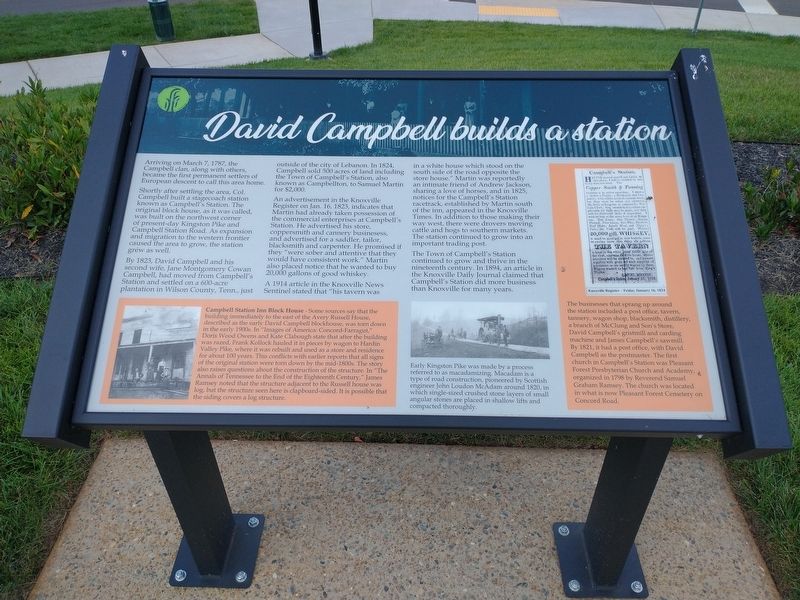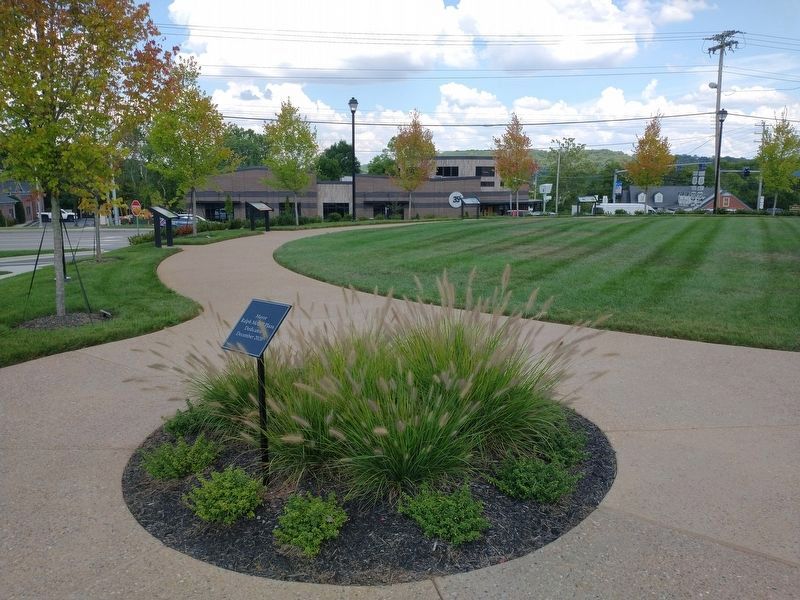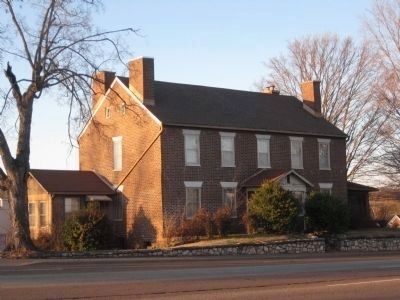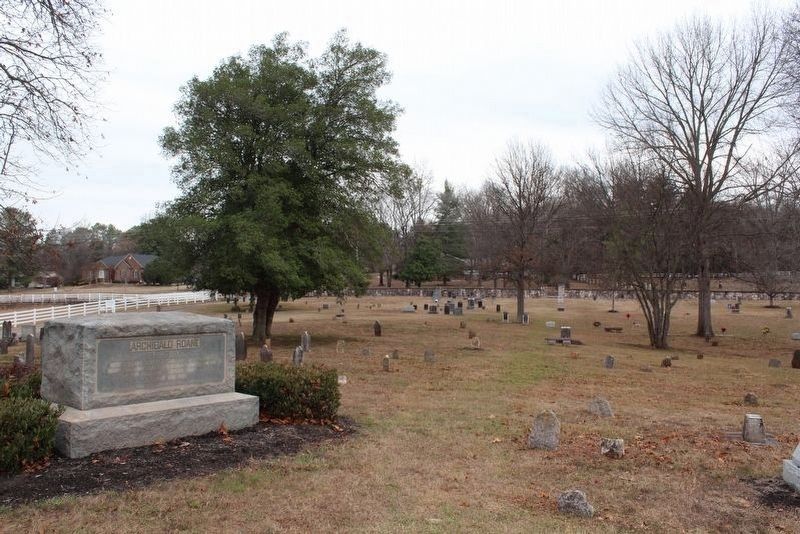Farragut in Knox County, Tennessee — The American South (East South Central)
David Campbell builds a station
Arriving on March 7, 1787, the Campbell clan, along with others, became the first permanent settlers of European descent to call this area home.
Shortly after settling the area, Col. Campbell built a stagecoach station known as Campbell’s Station. The original block house, as it was called, was built on the northwest corner of present-day Kingston Pike and Campbell Station Road. As expansion and migration to the western frontier caused the area to grow, the station grew as well.
By 1823, David Campbell and his second wife, Jane Montgomery Cowan Campbell, had from Campbell’s Station and settled on a 600-acre plantation in Wilson County, Tenn., just outside the city of Lebanon. In 1824, Campbell sold 500 acres of land including the Town of Campbell’s Station, also known as Campbellton, to Samuel Martin for $2000.
An advertisement in the Knoxville Register on Jan. 16, 1823, indicates that Martin had already taken possession of the commercial enterprises at Campbell’s Station. He advertised his store, coppersmith and cannery businesses, and advertised for a saddler, tailor, blacksmith and carpenter. He promised if they “were sober and attentive that they would have consistent work.” Martin also placed noted that he wanted to buy 20,000 gallons of good whiskey.
A 1914 article in the Knoxville News Sentinel stated that “his tavern was in a white house which stood on the south side of the road opposite the store house.” Martin was reportedly an intimate friend of Andrew Jackson, sharing a love of horses, and in 1825, notices for the Campbell’s Station racetrack, established by Martin south of the inn, appeared in the Knoxville Times. In addition to those making their way west, there were drovers moving cattle and hogs to southern markets. The station continued to grow into an important trading post.
The Town of Campbell’s Station continued to grow and thrive in the nineteenth century. In 1894, an article in the Knoxville Daily Journal claimed that Campbell’s Station did more business than Knoxville for many years.
[Sidebars:]
Campbell Station Inn Block House – Some sources say that the building immediately to the east of the Avery Russell House, described as the early David Campbell blockhouse, was torn down in the early 1900s. In “Images of America: Concord-Farragut”, Doris Wood Owens and Kate Clabaugh state that after the building was razed, Frank Kollock hauled it in pieces by wagon to Hardin Valley Pike, where it was rebuilt and used as a store and residence for about 100 years. This conflicts with earlier reports that all signs of the original station were torn down by the mid-1800s. The story also rases questions
about the construction of the structure. In “The Annals of Tennessee to the End of the Eighteenth Century”, James Ramsey noted that the structure adjacent to the Russell house was log, but the structure seen here is clapboard-sided. It is possible that the siding covers a log structure.
Early Kingston Pike was made by a process referred to as macadamizing. Macadam is a type of road construction, pioneered by Scottish engineer John Loudon McAdam around 1820, in which single-sized crushed stone layers of small singular stones are placed in shallow lifts and compacted thoroughly.
The businesses that sprang up around the station included a post office, tavern, tannery, wagon shop, blacksmith, distillery, a branch of McClung and Son’s Store, David Campbell’s gristmill ad carding machine and James Campbell’s sawmill. By 1821, it had a post office, with David Campbell as the postmaster. The first church in Campbell’s Station was Pleasant Forest Presbyterian Church and Academy, organized in 1798 by Reverend Samuel Graham Ramsey. The church was located in what is now Pleasant Forest Cemetery on Concord Road.
Topics. This historical marker is listed in these topic lists: Industry & Commerce • Roads & Vehicles • Settlements & Settlers. A significant historical date for this entry is March 7, 1787.
Location. 35° 52.895′ N, 84° 9.659′ W. Marker is in Farragut, Tennessee, in Knox County. Marker is on North Campbell Station Road close to Kingston Pike (U.S. 11/70), on the left when traveling north. The marker stands in Mayor Ralph McGill Plaza. Touch for map. Marker is at or near this postal address: 101 N Campbell Station Rd, Knoxville TN 37934, United States of America. Touch for directions.
Other nearby markers. At least 8 other markers are within walking distance of this marker. During the Civil War (here, next to this marker); Settlement of the Frontier (here, next to this marker); After the Civil War (here, next to this marker); Admiral David Glasgow Farragut Monument (approx. 0.2 miles away); Battle of Campbell's Station (approx. ¼ mile away); Loveville (approx. half a mile away); Archibald Roane (approx. half a mile away); David Glasgow Farragut (approx. half a mile away). Touch for a list and map of all markers in Farragut.
Related markers. Click here for a list of markers that are related to this marker.
Credits. This page was last revised on August 17, 2021. It was originally submitted on August 15, 2021, by Tom Bosse of Jefferson City, Tennessee. This page has been viewed 323 times since then and 63 times this year. Photos: 1, 2, 3, 4. submitted on August 15, 2021, by Tom Bosse of Jefferson City, Tennessee. • Devry Becker Jones was the editor who published this page.



